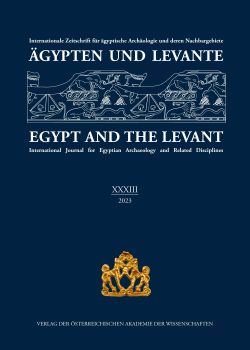
Ägypten und Levante 33, pp. 159-178, 2024/02/28
Internationale Zeitschrift für ägyptische Archäologie und deren Nachbargebiete
International Journal for Egyptian Archaeology and Related Disciplines
This article is a study of a new fragment of the architrave from Kom el-Akhdar, dating from the late Sixth to the Eighth Dynasty. H.G. Fischer previously published the right section of this architrave in 1976, while the left section ended up in the Rupert Wace gallery. The high-ranking official who owned the architrave was named nj -nDm=j -Xnmw. The monument is particularly interesting as a historical source for understanding the Old Kingdom administration in the Delta and the relationships between Egyptians and neighboring Semitic tribes. The left section of the architrave contains the ending of the main inscription, accompanied by images of the deceased seated on a chair, his son approaching with birds in hand as an offering, his second wife (or daughter) standing behind him, and a dwarf under the chair. The first part of this study includes a transcription and translation of all the inscriptions, as well as a grammatical commentary on the conversation between the butchers in the scene depicting the slaughtering of an ox. The second part of the study will predominantly include a commentary on anthroponyms and notes on various titles. Special attention is paid to the grammatical structure of names with the nisba nj as the predicate: nj-nDm=j -Xnmw and nj-sw-xw=j. It is important to note that this article is a revised version of the original paper in Russian (Bogdanov 2022).
Keywords: Old Kingdom Egypt, 6th Dynasty, 8th Dynasty, Ancient Egyptian monumental inscriptions, Egyptian Delta in antiquity, Old Egyptian language